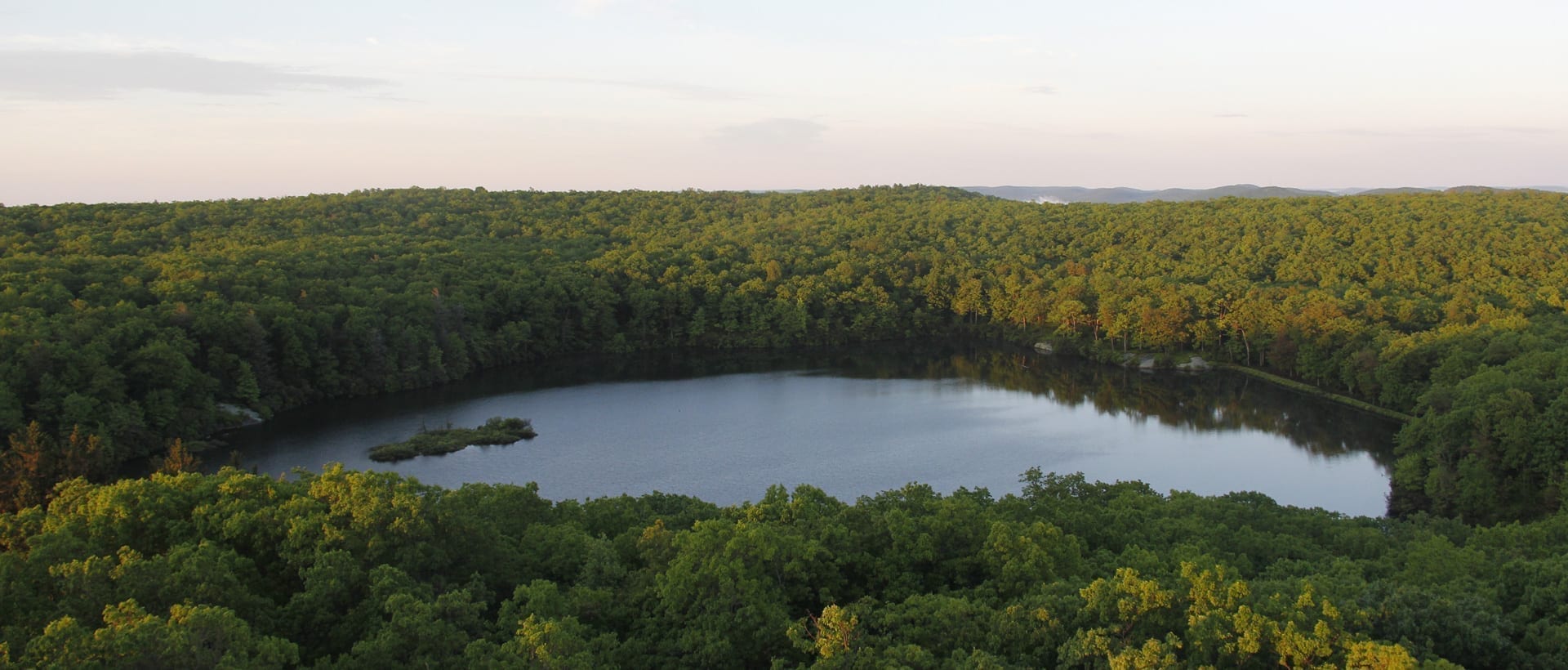Black Rock Forest is a 501 (c) 3 not-for-profit organization with a mission of advancing scientific understanding of the natural world through research, education, and conservation programs. The organization maintains a 3,920-acre forest and a scientific field station in the Hudson Highlands, 60 miles north of New York City. We collaborate with our Consortium members – universities, schools, scientific and cultural institutions – to pursue and foster scientific inquiry, and to create educational programs for K-16 students, teachers, and the general public. Black Rock Forest works with many partners to pursue conservation goals in the Hudson Highlands and the greater mid-Hudson Valley region.
Impact
Since the organization’s founding in 1989, it has become one of the nation’s most active scientific field stations. With the data collected, we know a good deal more about the strengths of our region’s forests, including the effects on, and mechanisms of, carbon storage, water filtration, and ecosystem regulation by dominant species like oaks. We also know significantly more about the challenges faced in our region, including rising temperatures, more severe drought regimes, and other environmental conditions that increase native tree species’ vulnerability to pathogens or negatively affect their regeneration.
Black Rock Forest has also become a regional center for hands-on education, particularly science education. In the 1990s, the Black Rock Forest Consortium raised $4 million to build two state-of-the-art green buildings, the Science and Education Center and the Forest Lodge, to enable productive pursuit of a broad range of scientific, education, and conservation activities. The organization now supports more than 8,000 student-visitor days annually at the Forest and operates a Summer Science Camp that attracts an international group of students interested in environmental science and conservation biology. To promote, develop and support science education of the highest quality, Black Rock Forest is partnering with independent evaluators from Columbia University’s Teachers College on an innovative evaluation technique, the Baker-Rodrigo Observation Method Protocol (BROMP), to assess student engagement, which is a prerequisite for learning, in the classroom, laboratory and field, and provide feedback educators can use to increase engagement.
In conservation, Black Rock Forest has been effective in helping to preserve the Hudson Highlands’ environmental legacy as a National Heritage Area and increasingly important refuge for wildlife, by working in coalition on energy, water, and land management issues, and most recently by helping to secure an essential wildlife corridor between Black Rock Forest and Schunnemunk Mountain State Park, keeping open migration pathways between more than 117,000 acres of protected land.
Organizational History
Black Rock Forest was established as a research forest in 1929 by Dr. Ernest G. Stillman, a landowner who was dedicated to science, and who left the forest to Harvard University, his alma mater, by bequest in 1949. By 1989, 75 scientific publications had been produced in Black Rock Forest. Stillman intended the Forest to be “constantly useful and constantly flourishing” (The New Yorker, 1984). In the 1960s, however, a plan to build the country’s first pumped storage power plant on neighboring Storm King Mountain posed a threat to the Forest, much of which was to be submerged under Con Edison’s proposed storage reservoir for the plant.
The nationally publicized, twenty-year battle over the proposed Storm King plant is considered by many to be the genesis of the modern environmental movement in the United States. The proceedings were the first in which citizen groups gained legal standing to object to a development on the basis of conservation and environmental impact. The earliest groups to oppose the plant were the New York-New Jersey Trail Conference, which later became a member of the Black Rock Forest Consortium; the Cornwall-on-Hudson Garden Club; the Nature Conservancy; and early founders of the National Resources Defense Council and Scenic Hudson. They were joined by the Garden Club of America, the Sierra Club, the Hudson River Fishermen’s Association, and the Palisades Interstate Parks Commission, among others. Scenic Hudson won a settlement with Con Edison in 1980 and the plant was never built. Several Cornwall-based founders of Scenic Hudson later helped as Black Rock Forest was being established.
Black Rock Forest Consortium (now known simply as Black Rock Forest) was formed in 1989 by William T. Golden, following his purchase of the Forest from Harvard, and by 15 founding institutional members, many of which are still Consortium members today. For nearly 60 years, Golden played a pivotal role at the intersection of science and society: he recommended creating the position of Science Advisor to the President to President Truman, and had major influence during the formation of the National Science Foundation. He also served on the boards of many important scientific organizations including the Carnegie Institution of Washington and the American Association for the Advancement of Science, and was co-chair of the Carnegie Commission on Science, Technology, and Government. In giving the forest lands to a not-for-profit organization, Golden facilitated the creation of the only scientific research organization in the Hudson Highlands and an enduring resource for research-informed conservation and science education.
References
Binnewies, Robert O. Palisades: 100,000 Acres in 100 Years. New York, Fordham University Press and Palisades Interstate Park Commission, 2001.
Dunwell, Frances F. Hudson River Highlands, Columbia University Press, 1992.
Stillman, C. W. 1966. The issues in the Storm King controversy. Black Rock Forest Paper No. 27. Cornwall Press, Cornwall, NY. 18 p.
Trow, George W. S. “Annals of Discourse: The Harvard Black Rock Forest,” The New Yorker, 06/11/1984.

